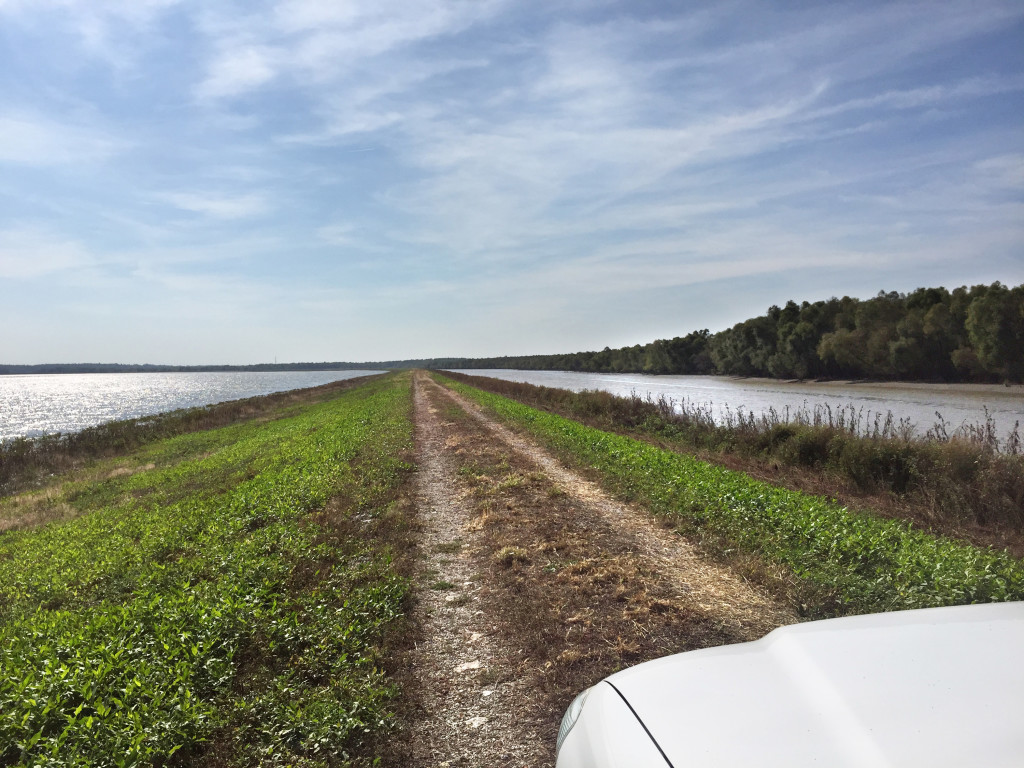The sun pokes through a misty October sky on Saturday, Oct. 16. We have 8 miles of roadway pretty much to ourselves as we drive along the levee that surrounds a 2,200 acre body of water known as the South Pool. Cyndi and I, and a few thousand birds, all enjoy the beautiful autumn day.
A couple of times a year, the staff at the Chautauqua National Wildlife Refuge open the levee road gates and allow visitors to drive around the south pool. On this occasion, it is in celebration of a birthday. The Chautauqua National Wildlife Refuge turned 80 years old this year. That is a long history of providing refuge for migratory waterfowl and shorebirds. It is a fascinating history, and something that we should be proud of.
For thousands of years, this area was a rich mix of wetlands, sloughs, backwaters and woodlands. In the early 1920s, the area was diked, drained and converted to agriculture, but the farming operation only lasted a couple of years before the Illinois River flooded and reclaimed the crop land. Silt carried by the frequently flooding river soon smothered out much of the native vegetation. What had once been a glorious habitat for thousands of years was gone within a decade. It wasn’t even suitable to grow crops because the economics of building and maintaining a levee high enough to keep the river out would never see a return on investment. It is just one example of how short-sighted thinking has reeked havoc on the environment.
In 1936, the federal government purchased the 4,388 acre levee and drainage district and began managing the property for wildlife and flood control. Over the years, it has become an important part of the survival strategy for migrating waterfowl. In general, the idea is to let the pools drain out in the summer so moist-soil vegetation can grow and go to seed. In the spring and fall, seasonal floods can enter the area and provide backwater lakes for migrating waterfowl. However, the river is a temperamental partner in this arrangement, and sometimes summer floods keep the backwaters from drying up long enough to allow for vegetation to grow. It has been this way for the last couple of years. The refuge staff said that the water levels have been unusually high because almost every summer rain we’ve gotten has been a deluge. As the river rises, so does Chautauqua. When it is full of water, it can take a month for the water to drain out, and that will only happen if the river allows it. It is a challenge, but the staff still manages to produce some wonderful habitat.
On our drive around the levee road, we saw Northern Harriers cruising over the edges of the South Pool where vegetation was thick. A Bald Eagle sat high on a dead cottonwood tree, surveying his domain. A young Peregrine Falcon was trying to surprise a flotilla of Blue-winged Teal with hopes that one would jump to the sky and become dinner. The teal have seen this trick before apparently, since no one took the bait. The water was alive with the scurrying of migration. Even though it was a tough year for the refuge staff to manage a fickle river system, they still managed to pull a rabbit out of the hat and create a magical experience. We owe a lot of thanks to Bob Barry, the refuge manager, and the rest of his dedicated staff. I’m sure the waterfowl that rely on the refuge for their survival would also agree.
This month is another anniversary of sorts. In October of 2015, two ranchers near Burns Oregon were tried and convicted of arson on federal land. This would lead to what would become the armed occupation of the Malheur National Wildlife Refuge in eastern Oregon later that winter. The siege went on for over 40 days. During that time, refuge staff was unable to care for the refuge. What is perhaps more troubling, is that the whole episode created some deep emotional scars in the community. The trial of those who occupied the refuge is still taking place. We can only hope that the better angles on our shoulders can persevere and keep our society on an even keel. Chautauqua, our National Wildlife Refuge, is a long way away from what took place in eastern Oregon. Let’s keep it that way.
Chautauqua National Wildlife Refuge is about 40 miles south of Peoria.

PHOTO BY MIKE MILLER Mike Miller and his wife Cyndi drive along 8 miles of roadway over the levee at Chautauqua National Wildlife Refuge. Gates are opened several times a year to allow drivers on the levee road, providing a great opportunity for bird watchers.

Recent Comments